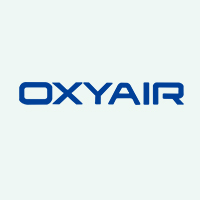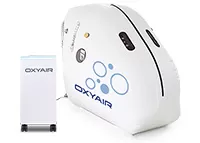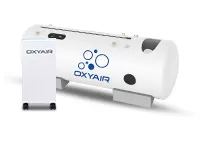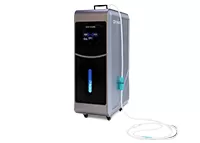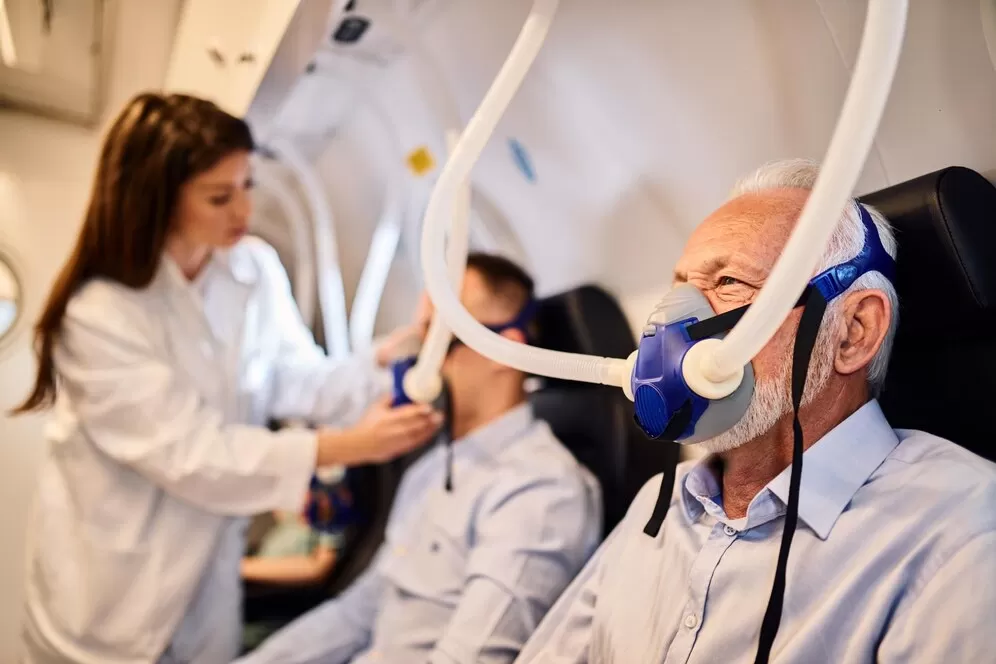How Often Should You Do Hyperbaric Oxygen Therapy?
So you've tried hyperbaric oxygen therapy and felt the benefits. Maybe your energy levels spiked, your wounds healed faster, or your mood brightened. Now you're wondering how often you should book a session to keep reaping the rewards. The good news is hyperbaric oxygen therapy can be done on a regular basis, but the frequency depends on your personal health goals and situation. For general wellness or increased vitality, many people find that once or twice a week provides a nice boost without breaking the bank. If you're addressing a chronic health condition or sports injury, several sessions over a few weeks may be recommended to stimulate healing before dropping down to a maintenance schedule. The key is finding the right rhythm to suit your needs. Talk to your doctor and hyperbaric technician to determine an optimal plan so you can keep experiencing the power of pressurized oxygen.
What Is Hyperbaric Oxygen Therapy?
Hyperbaric oxygen therapy involves breathing pure oxygen in a pressurized room or chamber. The oxygen is delivered at a higher than normal pressure, which helps your lungs absorb more oxygen than would be possible breathing pure oxygen at normal pressure.
What Does Hyperbaric Oxygen Therapy Involve?
During hyperbaric oxygen therapy, you lie down in a clear plastic chamber, similar to an MRI machine. The chamber is then slowly pressurized to 1.5 to 3 times the normal pressure of the surrounding environment. You breathe pure oxygen through a mask or hood in the chamber for usually 1 to 2 hours.
How Does Hyperbaric Oxygen Therapy Work?
The increased oxygen in your blood supply delivered via hyperbaric oxygen therapy has several therapeutic effects:
It helps promote healing in damaged tissues like wounds, burns, and injuries. The extra oxygen helps new cell growth and fighting infection.
It reduces swelling and inflammation. The increased pressure helps constrict blood vessels, reducing edema in the area.
It enhances the body's innate healing abilities. Higher oxygen levels stimulate the release of substances called growth factors and stem cells, which promote healing.
It helps treat conditions like carbon monoxide poisoning or gas gangrene. The increased oxygen helps displace gases like carbon monoxide from the bloodstream.
It may help treat other conditions like decompression sickness, radiation injuries, and severe anemia. The increased blood oxygenation can have benefits for a variety of conditions.
It may have some longer-term benefits as well. Some research shows HBOT may help treat symptoms of Alzheimer's, dementia, autism, MS, and other neurological conditions. The effects seem to be enhanced blood flow and reduced inflammation in the brain.
Hyperbaric oxygen therapy is a non-invasive treatment and considered very safe for most people. It does have some risks like barotrauma to the ears or sinuses, so you need to check with your doctor to see if HBOT is appropriate for your condition. For the best results, multiple treatments over several weeks are typically needed. The number of treatments will depend on your medical condition and how well you respond.
The Benefits of Regular Hyperbaric Oxygen Therapy
The Benefits of Regular Hyperbaric Oxygen Therapy
Hyperbaric oxygen therapy, or HBOT, involves breathing pure oxygen in a pressurized room or chamber. The increased air pressure allows your lungs to absorb more oxygen than normal, which provides several benefits. Regular HBOT treatments, especially when first beginning, can maximize these benefits.
Enhanced Wound Healing
One of the most well-known benefits of HBOT is that it speeds wound healing and recovery. When you have an injury, extra oxygen is needed to help repair tissue and fight infection. HBOT provides an abundance of oxygen to the wound site, which can decrease healing time by up to 50%. For chronic or non-healing wounds, HBOT may be a lifesaver.
Reduced Inflammation
HBOT has an anti-inflammatory effect. It can help reduce swelling in injuries and decrease inflammation in the body. This may provide relief from inflammatory conditions like arthritis or fibromyalgia. HBOT can also help with inflammation in the brain that contributes to issues like autism spectrum disorder or post-traumatic stress disorder.
Improved Blood Circulation
HBOT increases the amount of oxygen in the blood and enhances blood flow throughout the body. Better circulation means more oxygen reaches your cells, tissues, and organs. This can help improve function and cell health. Improved blood flow to the brain may also boost cognition, concentration, and mental well-being.
Strengthened Immune System
Oxygen is essential for the health of your immune cells and ability to fight off infection. HBOT gives your immune system a boost by supplying more oxygen to these cells. This can help strengthen your immunity and ability to combat bacteria, viruses, and other pathogens. Some even use HBOT to help prevent illness during cold and flu season.
To maximize the benefits, start with 60-90 minute sessions 3-5 times a week for the first month or two. Then reduce to 60 minutes 1-3 times a week for maintenance. Be sure to talk to your doctor about an HBOT schedule tailored to your specific health needs and conditions. With regular use, HBOT can have life-changing effects on both your physical and mental well-being.
How Often Should You Get Hyperbaric Oxygen Therapy?
So you’ve decided to try hyperbaric oxygen therapy, but how often should you actually do the treatments? The frequency and duration of your HBOT sessions will depend on your specific condition and goals. In general, the typical regimen is 20 to 40 one-hour sessions over the course of 6 to 8 weeks. Some people may need ongoing maintenance treatments 1-2 times per week or month after the initial sessions.
For wound healing and tissue damage
If you’re using HBOT for wound healing, skin grafts, or crush injuries, you’ll likely start with 2-3 hour-long sessions per day for the first week. After that, you’ll decrease to 1-2 sessions per day for 6-8 weeks until healed. Diabetic ulcers and radiation tissue damage may require 20-40 initial sessions and then ongoing monthly maintenance.
For brain injuries or neurological conditions
For conditions like traumatic brain injury, stroke, or cerebral palsy, a common protocol is 5 days a week for 4-8 weeks. An initial intensive course of 40-80 sessions over 10-20 weeks may be recommended in some cases. Maintenance sessions 1-2 times per month are often used to sustain improvements.
For other conditions
If you’re using HBOT for Lyme disease, anti-aging, or athletic performance enhancement, most physicians recommend starting with 10-20 initial sessions, then dropping down to 2-3 sessions per week for several months. An ongoing monthly maintenance session is common.
The key is to start slowly and find the 'sweet spot' that works for your needs. Some people feel dramatic improvements very quickly, while for others it can take 10-20 sessions to really start noticing changes. Be patient through the process, keep good notes about your experience and any progress made, and talk to your doctor about making any changes to the frequency or duration of your oxygen therapy sessions. With the right regimen, HBOT can be very effective at promoting healing, enhancing your health and improving your quality of life.
Hyperbaric Oxygen Therapy Schedule Based on Condition
The recommended schedule for hyperbaric oxygen therapy depends on the condition being treated. In general, treatments are administered either daily or a few times per week. The total number of treatments will vary depending on your condition and response.
1. For wounds and injuries, daily or near-daily treatments of 60-90 minutes are common, ranging from 15 to 40 total sessions. This helps promote healing and fight infection.
2. For conditions like carbon monoxide poisoning, acute mountain sickness or decompression sickness, initial treatment is often 2-3 hours of 100% oxygen at high pressure. Follow up treatments of 60-90 minutes are given 1-2 times daily until symptoms resolve, usually within 24-48 hours.
3. For other conditions like Lyme disease, autoimmune diseases or cerebral palsy, the typical protocol is 60-90 minute treatments 2-3 times per week for up to 40 treatments. Some patients may require periodic 'booster' treatments to maintain benefits.
The effects of hyperbaric oxygen therapy are cumulative, so consistent treatments according to the recommended schedule are important. While some people experience improvements in symptoms after just a few sessions, more chronic conditons typically require longer courses of treatment to gain maximum benefit.
During your initial consultation, your doctor will evaluate your condition and medical history to determine an appropriate treatment schedule based on standard protocols. The schedule may be adjusted based on your response and progress. It’s best to commit to completing the full course of treatment to give the therapy the best chance of success.
While hyperbaric oxygen therapy is considered very safe, side effects can include barotrauma to the ears and sinuses, claustrophobia, and oxygen toxicity seizures. Your doctor will discuss the risks and monitor you during treatments. Following all safety precautions and taking breaks when needed can help minimize any side effects.
Ongoing maintenance treatments after the initial therapy may be recommended for some people to help prevent recurrence or exacerbation of symptoms. The ultimate goal is for hyperbaric oxygen therapy to help support your body's own healing mechanisms so you can experience the benefits long-term.
Finding the Right Frequency for You
Finding the Right Frequency for You
When it comes to hyperbaric oxygen therapy (HBOT), how often you receive treatment can vary depending on your condition and goals. As with any medical therapy, more is not always better. You'll want to find the 'sweet spot' that provides maximum benefits with minimal risks or side effects.
For most conditions, doctors typically recommend 30 to 40 one-hour sessions over the course of 6 to 8 weeks to start. This usually amounts to 3 to 5 sessions per week. At this frequency, you'll saturate your tissues with oxygen and promote healing, without overdoing it. After the initial round, you may continue with 'booster' treatments of 10 to 15 sessions over 2 to 3 weeks, 2 to 3 times per year to maintain results.
However, some chronic conditions like traumatic brain injuries, cerebral palsy or autism may require 40 to 60 initial sessions to see significant improvements, and ongoing booster treatments 1 to 2 times per week indefinitely. The ideal frequency in these cases depends on how your body responds and how symptoms improve over the course of treatment. It's best to start conservatively at 3 times per week, and adjust based on your progress and energy levels.
For general health and wellness, one 60 to 90 minute session per week or every other week is typically sufficient. At this rate, you'll gain benefits like increased energy, improved sleep, enhanced wound healing and muscle recovery without risking oxygen toxicity. For athletic performance, 3 to 5 pre-workout sessions in the week leading up to a competition may provide a temporary boost.
The key is to listen to your body and work closely with your doctor to determine the right frequency and duration for your HBOT therapy. Be on the lookout for signs of too much oxygen like dizziness, ringing in the ears, blurred vision or seizures. By starting slowly and adjusting based on how you feel, you'll find the sweet spot for maximum benefits with minimal risks. The ideal frequency is unique to each individual, so take it slow and be patient through the process.

Conclusion
So based on all this, how often should you really do hyperbaric oxygen therapy? The short answer is, it depends on why you're doing it and what condition you're treating. For general health and wellness, a few times a month or a couple times a week can provide benefits. If you're addressing a chronic health condition, the frequency may need to be higher, such as a few times a week. For acute conditions like a sports injury, daily treatments over a shorter period of time may be recommended. The key is to work with a certified hyperbaric technician to develop a treatment plan tailored to your unique needs and situation. Hyperbaric oxygen therapy can be a safe and effective treatment when done properly and at the right frequency for you. Talk to the experts, give it a try, and see how much better you can feel by oxygenating your body and speeding healing. You owe it to yourself to experience the benefits of this innovative therapy.

